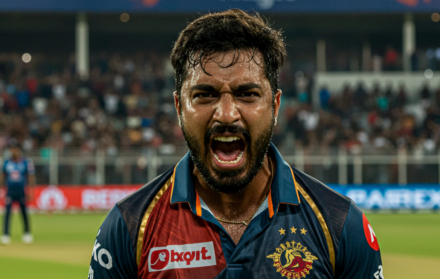
How Do Cricket Leagues Work
Cricket leagues have become a significant part of the sport, revolutionizing the way cricket is played, watched, and consumed. These leagues bring together players from around the world, providing a platform for intense competition and entertainment. Understanding how cricket leagues work involves delving into the history, types, structure, financial aspects, impact, and challenges associated with them.
The history and evolution of cricket leagues showcase how the concept has evolved over the years, from its origins in the English county cricket to the global T20 leagues we see today. The introduction of the Indian Premier League (IPL) in 2008 marked a turning point, setting the stage for the rise of various domestic and international leagues.
Different types of cricket leagues exist, including domestic leagues that focus on teams from a specific country and international leagues that bring together players from different nations. Each type offers its own unique dynamics, teams, and players.
The structure of cricket leagues involves various aspects, such as team formation, ownership, player auctions, and transfers. The league format and fixtures dictate how teams compete against each other, while the points system and standings determine their ranking. Playoffs and knockout stages determine the final winner of the league.
Financial aspects play a crucial role in cricket leagues, with revenue generation being a key focus. Sponsorships and broadcasting rights contribute significantly to the financial success of these leagues. Salary caps and player contracts govern how players are remunerated and manage the financial balance within the leagues.
Cricket leagues have a profound impact on the sport, including the development of talent, improvement in infrastructure, and the globalization of cricket. However, they also face controversies and challenges, including issues of match-fixing and corruption, player fatigue and injuries, and clashes with the international cricket calendar.
By exploring all these aspects, we can gain a comprehensive understanding of how cricket leagues function and their significance in the cricketing landscape.
History and Evolution of Cricket Leagues

Cricket leagues have a vibrant history and have evolved significantly over time. As we delve into the origins and development of these leagues, we can witness the remarkable growth and popularity of the sport.
From its modest beginnings in England to the explosive growth of franchise-based leagues like the Indian Premier League, the history and evolution of cricket leagues have played a pivotal role in shaping the sport’s landscape.
These leagues have not only added a fresh dimension to the game but have also opened up doors for players worldwide to showcase their skills. Undoubtedly, the global appeal and excitement of cricket are evident in the remarkable history and evolution of cricket leagues.
Types of Cricket Leagues
Cricket leagues come in various forms and cater to different aspects of the game. In this section, we’ll explore the exciting world of cricket leagues, focusing on the different types that exist. From domestic leagues that showcase local talent, to international leagues featuring top players from around the globe, we’ll uncover the diverse landscapes of cricket competition.
We’ll touch upon the intriguing structures that underpin these leagues, shaping the way matches are played and teams are organized. Get ready to dive into the thrilling realm of cricket leagues!
Domestic Leagues
In cricket, domestic leagues are competitions held within a specific country, showcasing the top cricketing talent within that nation. These domestic leagues play a crucial role in developing players, promoting the sport, and providing entertainment to the local fans.
The teams participating in domestic leagues are formed through a combination of player auctions and transfers. The league format includes a set number of matches played by each team, followed by playoffs and knockout stages to determine the overall winner.
Points are awarded based on the outcomes of matches, and team standings are determined by these points. Domestic leagues provide a platform for talented players, contribute to the growth of the sport, and create a sense of local pride.
International Leagues
International leagues in cricket are platforms that bring together teams from different countries to compete against each other. These leagues play a pivotal role in promoting the sport globally and provide an international stage for players to showcase their skills. By attracting top talent from around the world, these leagues ensure that cricket enthusiasts are treated to high-quality matches.
Among the well-known international cricket leagues are the Indian Premier League (IPL), Big Bash League (BBL), and Caribbean Premier League (CPL). These leagues follow a structured format, with teams engaging in a series of matches that ultimately lead to playoffs and a final, where the champion is determined. The revenue generated by these leagues heavily relies on broadcasting rights and sponsorships, making them even more significant.
Structure of Cricket Leagues
The structure of cricket leagues is composed of several components that play a crucial role in organizing and conducting the leagues.
- Team Formation and Ownership: The teams are established either through auctions or draft systems and are owned by either individuals or franchises.
- Player Auctions and Transfers: Prior to each season, players are bought and sold through auctions or transfers.
- League Format and Fixtures: The leagues can adopt either round-robin formats or group stages, where teams compete against each other to qualify for playoffs or knockout stages.
- Points System and Standings: The teams earn points for wins, losses, and ties, and their rankings are based on their performance.
- Playoffs and Knockout Stages: The top-performing teams engage in playoffs and knockout stages to determine the ultimate champion.
The structure of cricket leagues ensures fair competition, facilitates player transfers, and delivers thrilling matches for fans.
Team Formation and Ownership
Team formation and ownership in cricket leagues play a vital role in determining the success of a team. Understanding the key points is crucial:
- Ownership: Individuals, corporations, or franchises invest in the management and operations of teams in cricket leagues.
- Franchise bidding: In certain leagues, ownership rights are awarded through a bidding process where interested parties compete financially.
- Team composition: Teams are comprised of players selected through various methods such as auctions, drafts, or player transfers.
- Scouting and recruitment: Team owners, management, and coaches play a significant role in identifying and recruiting talented players for a competitive team.
- Financial responsibilities: Team owners are responsible for managing the team’s finances, including player salaries, coaching staff, infrastructure, and operational costs.
Player Auctions and Transfers

Player auctions and transfers are significant aspects of cricket leagues, allowing teams to acquire talented players and strengthen their squads. Here are some key points about Player Auctions and Transfers:
- Player Auctions: Teams bid for players in an auction before the start of each season, with the highest bidder securing the player’s services. This process ensures a fair distribution of player talent among teams.
- Transfers: During the league, teams can Transfer players among themselves, often in exchange for other players or financial considerations. Transfers allow teams to address specific needs or make strategic changes to their squad.
- Salary Considerations: Player Auctions and Transfers involve negotiations regarding player salaries. Factors such as performance, experience, and demand for a player influence the amount teams are willing to pay.
Player auctions and transfers play a crucial role in shaping the composition of teams and adding excitement to cricket leagues. They provide opportunities for players to showcase their skills in different teams and enable teams to strengthen their line-ups strategically.
League Format and Fixtures
The schedule and structure of the competition in cricket leagues are determined by the league format and fixtures.
1. League Format: Various formats like round-robin, double round-robin, or group stages followed by playoffs. 2. Fixtures: Pre-determined schedule detailing the dates, venues, and teams involved in each match. 3. Match Days: Matches are played on specific days, often with multiple matches taking place simultaneously. 4. Home and Away: Teams play matches both at their home ground and away at the opponent’s ground. 5. Neutral Venues: In some cases, matches are scheduled at neutral venues to ensure fairness and reach a wider audience.
Points System and Standings
The points system and standings hold great significance in cricket leagues as they determine the ranking and progression of teams throughout the tournament. Below is a table that exemplifies a typical cricket league’s points system and standings:
The allocation of points is based on the outcome of each match. A victory rewards a team with 2 points, a tie grants 1 point, and a loss results in no points. In case of equal points, the net run rate comes into play to determine the standings. This process leads to an exciting conclusion of the tournament as the top-ranked teams advance to the playoffs.
On a similar note, during the Indian Premier League (IPL) 2019, the Mumbai Indians emerged as the champions after intense competition, highlighting the immense importance of the points system and standings.
Playoffs and Knockout Stages
The playoffs and knockout stages are pivotal components of cricket leagues that ascertain the ultimate victor. In these stages, the top-performing teams engage in fierce competition with one another in order to progress to the subsequent round, ultimately culminating in the final match.
The playoffs and knockout stages are distinguished by an intense level of rivalry, as teams endeavor to secure their position in the final and lay claim to the championship title.
This phase of the league format generates exhilaration and captivates fans, who eagerly await the revelation of the teams that will successfully advance to the next round and, eventually, emerge victorious.
Financial Aspects of Cricket Leagues

Cricket leagues are not only about the thrill of the game but also involve a complex web of financial aspects. In this section, we’ll delve into the intriguing world of the financial side of cricket leagues.
From exploring revenue generation and the lucrative world of sponsorships and broadcasting rights, to understanding the dynamics of salary caps and player contracts, get ready to uncover the financial intricacies that shape these captivating leagues. Hold on tight, as we navigate through the money game behind the cricketing action!
Revenue Generation
Revenue generation is a vital aspect of cricket leagues, as it encompasses various sources of income. Here is a breakdown of how cricket leagues generate revenue.
1. Media Rights: Television and digital platforms pay significant amounts for broadcasting rights, particularly for high-profile matches, contributing to revenue generation. 2. Sponsorships: Companies sponsor teams, tournaments, and players, offering financial support in exchange for brand visibility, thereby boosting revenue generation. 3. Ticket Sales: Fans purchase tickets to watch matches live, directly contributing to the revenue generated by cricket leagues. 4. Merchandising: Official merchandise, such as team jerseys, caps, and other cricket-related products, is sold to fans, further enhancing revenue generation. 5. Licensing and Royalties: Leagues earn revenue by licensing their logos, trademarks, and intellectual property for various commercial purposes, facilitating revenue generation.
To maximize revenue generation, cricket leagues can explore additional avenues such as organizing concerts or events alongside matches, offering corporate hospitality packages, and expanding their digital platforms to increase viewership and ad revenue.
Sponsorships and Broadcasting Rights
Sponsorships and broadcasting rights play a pivotal role in the success of cricket leagues, providing substantial financial support. These elements are essential as they help attract top teams, players, and viewership, ultimately leading to increased revenue.
From jersey branding to title sponsorships, there are various sponsorship opportunities available. Additionally, the sale of exclusive media coverage to television networks or online streaming platforms allows fans worldwide to watch their favorite teams and players in action.
Notably, popular brands such as Pepsi, Vodafone, and Nike often sponsor cricket leagues. The deals for broadcasting rights can generate millions of dollars, thereby contributing significantly to the financial viability of the leagues.
To unlock the full revenue potential, it is crucial for leagues to proactively cultivate and maintain strong relationships with sponsors and broadcasters.
Salary Caps and Player Contracts
Salary caps and player contracts play a crucial role in cricket leagues, ensuring fair competition and financial stability for teams.
Salary Caps: A maximum limit is set on the total amount a team can spend on player salaries, preventing excessive spending and promoting equality.
Player Contracts: Teams sign contracts with players specifying the duration, remuneration, and other terms. These contracts protect both parties’ rights and provide stability.
History shows that salary caps were first implemented in cricket leagues to prevent financial disparities and maintain a level playing field. Player contracts, on the other hand, have evolved over time, becoming more comprehensive and legally binding agreements.
These mechanisms have contributed to the growth and sustainability of cricket leagues worldwide.
Impact and Influence of Cricket Leagues

Cricket leagues are more than just exhilarating games. They have a profound impact on the world of cricket. In this section, we’ll explore the influence of cricket leagues and how they contribute to the development of talent, improvement in infrastructure, and the globalization of the sport.
Get ready to dive into the fascinating ways in which these leagues shape the future of cricket on a global scale.
Development of Talent
Developing talent is a crucial aspect of cricket leagues that helps nurture future stars and ensure the sustainability of the sport.
Here are the key steps involved in the development of talent:
- Identifying promising young players with exceptional skills and potential.
- Providing specialized coaching and training programs to enhance their skills and overall cricketing abilities.
- Allowing young players to gain valuable match experience by participating in lower-tier leagues or age-group tournaments.
- Offering opportunities for young talent to compete alongside established players in professional leagues.
- Creating talent development pathways that provide a clear progression route for young players to move up the ranks.
A true story that exemplifies the positive impact of talent development in cricket is that of Sachin Tendulkar. Recognizing his talent at a young age, he was given opportunities to train and develop under the guidance of experienced coaches. Through hard work, dedication, and exposure to competitive cricket, Tendulkar went on to become one of the greatest cricket players of all time.
Improvement in Infrastructure
Significant improvement in infrastructure has been witnessed in cricket leagues in recent years. This positive shift has resulted in better facilities for players and spectators alike.
One area where infrastructure has experienced notable enhancement is in stadiums. State-of-the-art facilities with modern amenities have been constructed, offering improved seating, better viewing angles, as well as additional provisions such as food courts and entertainment zones.
Moreover, cricket academies and training centers have been established to groom young talent and enhance the overall standard of the sport.
Another aspect that has seen progress is the integration of advanced technologies. LED scoreboards, high-definition cameras, and smart replay systems have been incorporated to elevate the viewing experience.
Transportation infrastructure around stadiums has also been upgraded, making it easier for fans to access the venues. This includes the provision of ample parking areas and improved public transportation options.
Additionally, heightened security measures have been put in place to ensure the safety of players and spectators during matches. These measures encompass surveillance systems and well-trained personnel.
These infrastructure improvements have not only elevated the quality of cricket leagues but have also contributed significantly to the growth and popularity of the sport.
Globalization of Cricket
The globalization of cricket has had a significant impact on the sport’s popularity and reach worldwide.
With the globalization of cricket, international cricket leagues like the Indian Premier League (IPL) and the Big Bash League (BBL) have emerged, making cricket a truly global phenomenon.
These leagues attract players from different countries, exposing them to different cultures and playing styles, thus contributing to the globalization of cricket.
The popularity and success of these leagues have also led to increased investment in cricket infrastructure and development programs in various countries, further promoting the globalization of cricket.
This increased global exposure has helped in the growth and expansion of cricket beyond its traditional strongholds, making it a more inclusive and diverse sport.
Controversies and Challenges in Cricket Leagues

Controversies swirl, challenges arise in cricket leagues – from match fixing and corruption to player fatigue and injuries, and the clash with international cricket calendar. Strap in, folks, as we dive into the turbulent waters of cricket league controversies, uncovering the dark underbelly of match-fixing culprits and exploring the toll it takes on players’ well-being.
Brace yourselves for a rollercoaster ride through the controversies and challenges that have rocked the world of cricket leagues.
Match Fixing and Corruption
Match fixing and corruption are unfortunate aspects of cricket leagues that can undermine the integrity of the sport. These illicit practices involve manipulating or influencing the outcome of matches for personal gain.
Match fixing and corruption can occur through various means, such as bribing players, officials, or bookmakers. Corruption within cricket leagues not only tarnishes the reputation of the game but also erodes the trust of fans and stakeholders.
One notable example of match fixing and corruption is the notorious spot-fixing scandal involving certain players during the 2013 Indian Premier League. Such incidents highlight the ongoing need for robust anti-corruption measures and ethical standards within cricket leagues.
Player Fatigue and Injuries
Player fatigue and injuries are significant concerns in cricket leagues. The demanding schedule and high intensity of matches can lead to physical and mental exhaustion, increasing the risk of player fatigue and injuries. Fatigue can have a detrimental impact on players’ performance and overall health, which in turn affects the quality of play.
Therefore, it becomes imperative for cricket leagues to prioritize player welfare by implementing rest periods, managing workload, and providing adequate recovery time. The involvement of sports science and medical teams is crucial in monitoring and managing player fatigue and injuries effectively.
Through the implementation of proper measures, cricket leagues can effectively reduce the risk of player burnout and ensure the long-term sustainability of the sport.
Clash with International Cricket Calendar
The clash between cricket leagues and the international cricket calendar is a significant challenge faced by the cricketing world. This clash often arises due to overlapping schedules, resulting in players having to choose between representing their national teams or participating in domestic leagues.
This can lead to strained relationships between players, boards, and leagues. It can impact the quality of international cricket and compromise player availability.
To mitigate this issue, cricket boards and leagues should work collaboratively to create a balanced and coordinated calendar. This would ensure that players can participate in domestic leagues without compromising their national team commitments, ultimately benefiting both the players and the sport as a whole.





